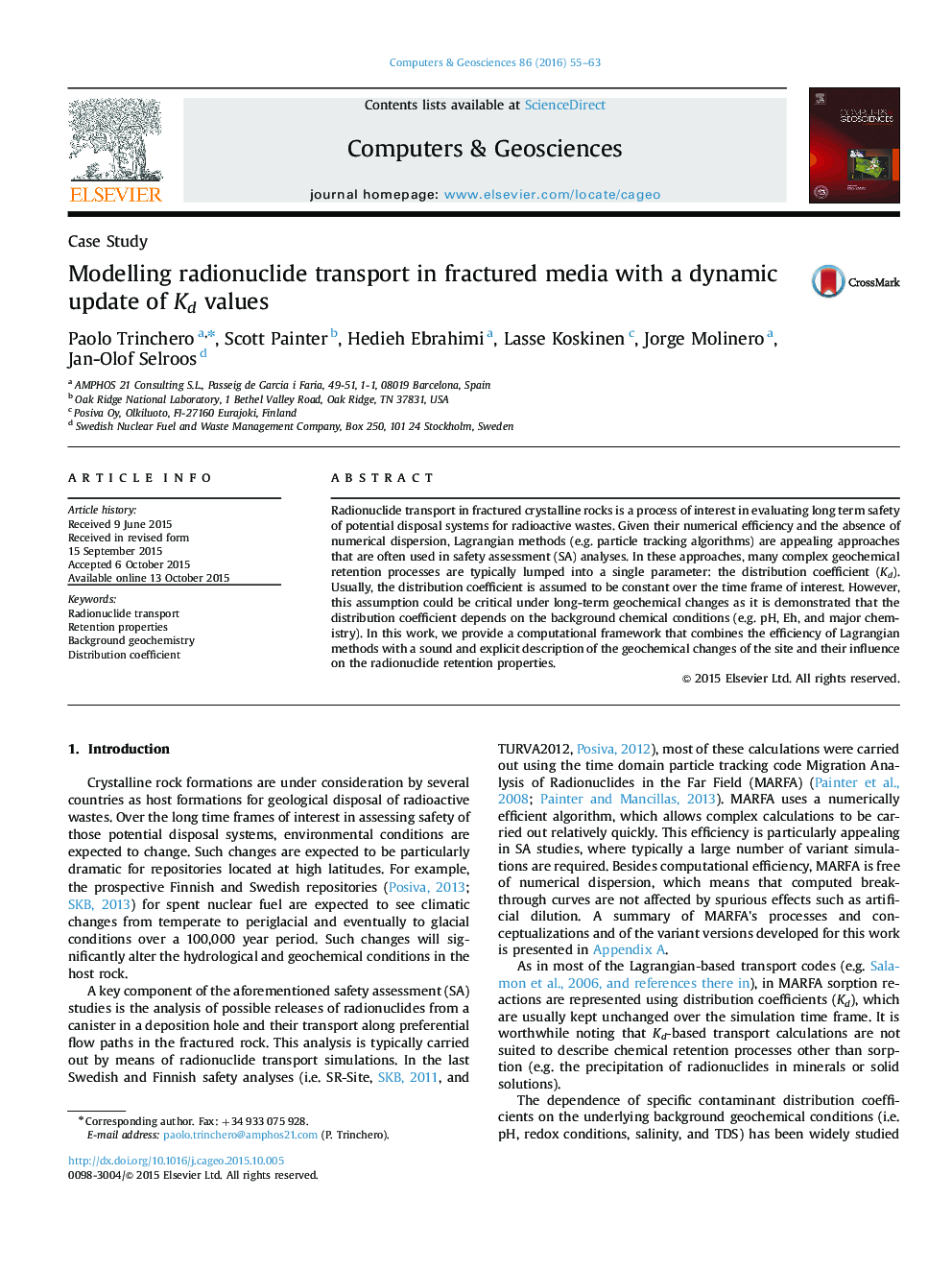| Article ID | Journal | Published Year | Pages | File Type |
|---|---|---|---|---|
| 6922468 | Computers & Geosciences | 2016 | 9 Pages |
Abstract
Radionuclide transport in fractured crystalline rocks is a process of interest in evaluating long term safety of potential disposal systems for radioactive wastes. Given their numerical efficiency and the absence of numerical dispersion, Lagrangian methods (e.g. particle tracking algorithms) are appealing approaches that are often used in safety assessment (SA) analyses. In these approaches, many complex geochemical retention processes are typically lumped into a single parameter: the distribution coefficient (Kd). Usually, the distribution coefficient is assumed to be constant over the time frame of interest. However, this assumption could be critical under long-term geochemical changes as it is demonstrated that the distribution coefficient depends on the background chemical conditions (e.g. pH, Eh, and major chemistry). In this work, we provide a computational framework that combines the efficiency of Lagrangian methods with a sound and explicit description of the geochemical changes of the site and their influence on the radionuclide retention properties.
Related Topics
Physical Sciences and Engineering
Computer Science
Computer Science Applications
Authors
Paolo Trinchero, Scott Painter, Hedieh Ebrahimi, Lasse Koskinen, Jorge Molinero, Jan-Olof Selroos,
